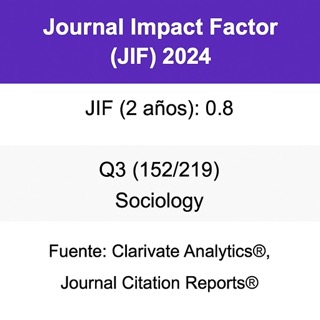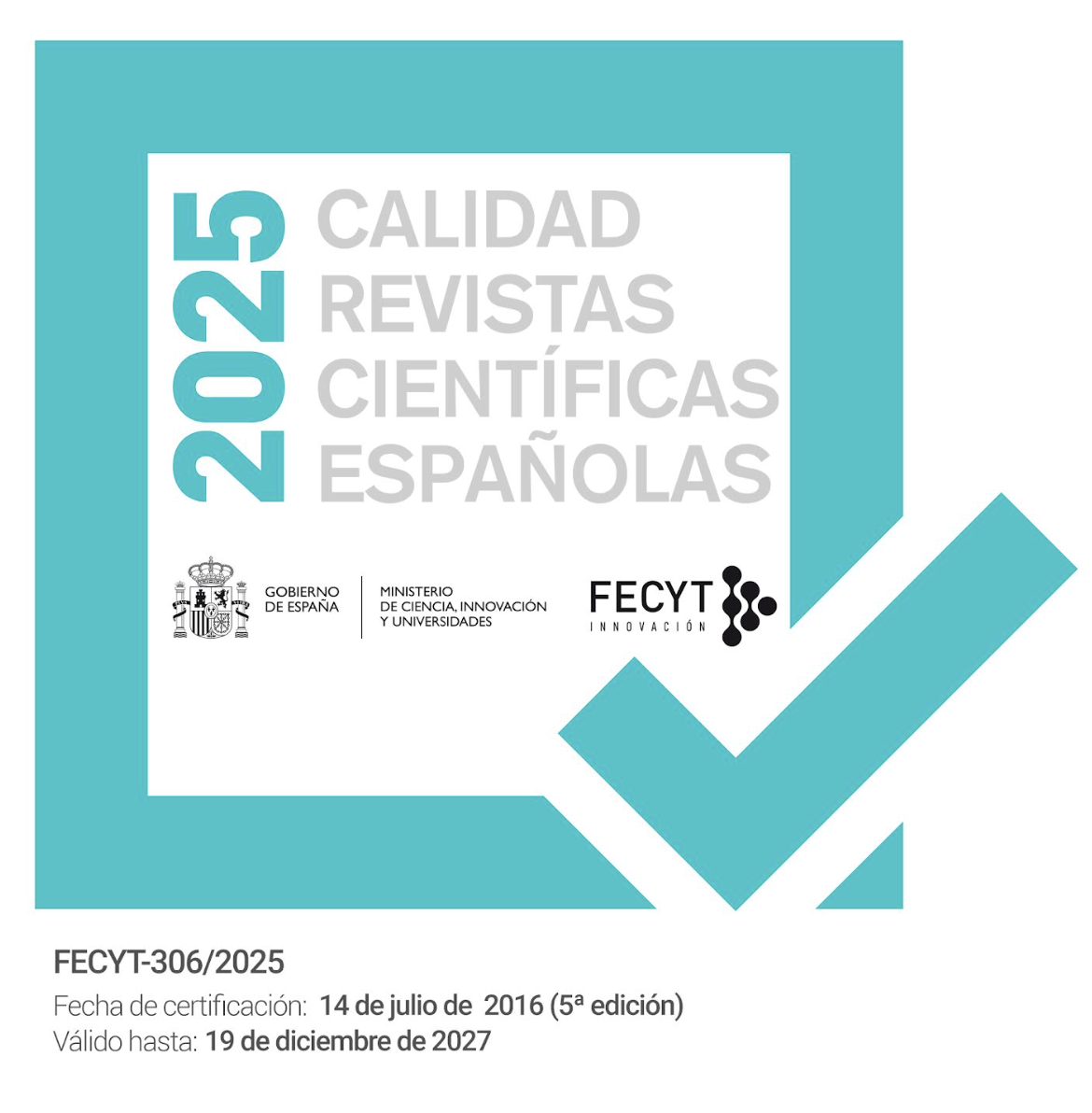El factor explicativo de la orientación sexual en el comportamiento político y electoral en España (2016-2021)
DOI:
https://doi.org/10.22325/fes/res.2022.135Palabras clave:
Orientación sexual, participación electoral, voto, identificación ideológica, EspañaResumen
La investigación sociológica sobre los efectos de la orientación sexual en el comportamiento político y las actitudes electorales ha sido escasa; en España, casi inexistente. En el presente texto, bajo el contexto del aumento de los análisis sobre la importancia de los procesos de identidad en el voto, se pretende analizar el impacto de la orientación sexual en tres cuestiones: 1) participación política, 2) ideología y 3) identificación partidista de las personas LGBA+ (lesbianas, gays, bisexuales y otras orientaciones sexuales); y si existen diferencias significativas con los individuos heterosexuales. En base a dos encuestas del Centro de Investigaciones Sociológicas de los años 2016 y 2021, los resultados permiten corroborar que las personas LGBA+ participan más electoralmente, están posicionadas más a la izquierda del eje ideológico y votan con mayor probabilidad a partidos progresistas. De este modo, el presente trabajo pone de relieve la importancia de la orientación sexual en la investigación social y muestra que estas diferencias entre heterosexuales y no heterosexuales pueden ser determinantes en nuestras campañas electorales y sistemas políticos.
Citas
Abdelal, R., Herrera, Y. M., Johnston, A. I., & McDermott, R. (2006). Identity as a variable. Perspectives on Politics, 4(4), 695-711. https://doi.org/10.1017/S1537592706060440
Alford, J. R., Funk, C. L., & Hibbing, J. R. (2005). Are Political Orientations Genetically Transmitted?. The American Political Science Review, 99(2), 153-167. https://doi.org/doi:10.1017/S0003055405051579
Ansolabehere, S., & Puy, M.S. (2016). Identity voting. Public Choice, 169, 77-95. https://doi.org/10.1007/s11127-016-0371-2
Ayoub, P., & Garretson, J. (2017). Getting the Message Out: Media Context and Global Changes in Attitudes Toward Homosexuality. Comparative Political Studies, 50(8), 1055-1085. https://doi.org/10.1177/0010414016666836x
Bailey, R. W. (1999). Gay Politics, Urban Politics: Identity and Economics in the Urban Setting. Nueva York: Columbia University Press.
Bakker, R., Marks, G., Edwards, E., Polk, J., Hooghe, L., Rovny, J., Vachudova, M., & Steenbergen, M. (2015). Measuring party positions in Europe: The Chapel Hill Expert Survey Trend File, 1999-2010. Party Politics, 21(1), 143-152. https://doi.org/10.1177/1354068812462931
Bates, N., García Trejo, Y., & Vines, M. (2019a). Are Sexual Minorities Hard-to-Survey? Insights from the 2020 Census Barriers, Attitudes, and Motivators Study (CBAMS) Survey. Journal of Official Statistics, 35(4) 709-729. https://doi.org/10.2478/jos-2019-0030
Bates, N., Steinmetz, S., & Fischer, M. (2019). Special Issue on Measuring LGBT Populations (Preface). Journal of Official Statistics, 35(4), 699-707. https://doi.org/10.2478/jos-2019-0029
Berelson, B., Lazarsfeld, P. & McPhee, W. (1954). Voting: A Study of Opinion Formation in a Presidential Campaign. Chicago: University of Chicago Press.
Calvo, K. (2017). ¿Revolución o reforma?: la transformación de la identidad política del movimiento LGTB en España, 1970-2005. Madrid: Editorial CSIC (Consejo Superior de Investigaciones Científicas).
Clements, B. & Field, C. (2014). Public Opinion toward Homosexuality and Gay Rights in Great Britain. Public Opinion Quarterly, 78(2), 523-547. https://doi.org/10.1093/poq/nfu018
Cook, T. E. (1999). The Empirical Study of Lesbian, Gay, and Bisexual Politics: Assessing the First Wave of Research. The American Political Science Review, 93(3), 679-692. https://doi.org/10.2307/2585582
Egan, P. (2008). Explaining the Distinctiveness of Lesbians, Gays, and Bisexuals in American Politics. SSRN Electronic Journal. https://doi.org/10.2139/ssrn.1006223
Egan, P. (2020). Identity as Dependent Variable: How Americans Shift Their Identities to Align with Their Politics. American Journal of Political Science, 64(3), 699-716. https://doi.org/10.1111/ajps.12496
Fischer, M. (2016). Identifying same-sex couples in cross-national survey data: A comparison of same-sex couples’ demographic and socio-economic traits in six European countries. In Nederland in context: verschillen en overeenkomsten (pp. 50-79). DANS.
Garmendia, A., y León, S. (2020): ¿El fin del consenso territorial en España?. En A. Panadés (Dir.), Informe sobre la Democracia en España 2019 (pp. 25-49). Fundación Alternativas.
Garrido, A.; Martínez, M., y Mora, A. (2021): Polarización afectiva en España. Más Poder Local, (45), 21-40. https://www.maspoderlocal.com/index.php/mpl/article/view/polarizacion-afectiva-en-espana-mpl45
Grollman, E. (2017). Sexual orientation differences in attitudes about sexuality, race, and gender. Social Science Research, 61, 126-141. https://doi.org/10.1016/j.ssresearch.2016.05.002
Guntermann, E., & Beauvais, E. (2021): The Lesbian, Gay, and Bisexual Vote in a More Tolerant Canada. Working Paper. http://www.ericguntermann.com/research.html
Guasch, O., y Osborne, R. (2003). Sociología de la Sexualidad. Madrid: Centro de Investigaciones Sociológicas.
Hertzog, M. (1996). The Lavender Vote. Nueva York: New York University Press.
Hooghe, L.; Marks, G. & Wilson, C. (2002). Does Left/Right Structure Party Positions on European Integration?. Comparative Political Studies, 35 (8):965-989. https://doi.org/10.1177/001041402236310
Inglehart, R. (1990). Cultural shift in advanced industrial society. Princeton: Princeton University Press.
Justo, C. (2005): Sociología de la sexualidad. Política y Sociedad, 42, 273-275.
Lewis, G. B., & Gossett, C.W. (2008). Changing Public Opinion on Same-Sex Marriage: The Case of California. Politics & Policy, 36(1), 4-30. https://doi.org/10.1111/j.1747-1346.2007.00092.x
Lewis, G., Rogers, M., & Sherrill, K. (2011). Lesbian, Gay, and Bisexual Voters in the 2000 US Presidential Election. PMAP Publications, 7. https://scholarworks.gsu.edu/pmap_facpubs/7
Lipset, S. & Rokkan, S. (1967). Party Systems and Voter Alignments: Cross-National Perspectives. Nueva York: Free Press.
Long, J. & Mustillo, S. A. (2021). Using Predictions and Marginal Effects to Compare Groups in Regression Models for Binary Outcomes. Sociological Methods & Research, 50(3), 1284-1320. https://doi.org/10.1177/0049124118799374
Magni, G. (2020). Elections and the Role of LGBT Issues in the United States and Abroad. Oxford Research Encyclopedia of Politics. https://doi.org/10.1093/acrefore/9780190228637.013.1210
Miller, L. (2020). Polarización en España: más divididos por ideología e identidad que por políticas públicas. Informe ESADE ECPOL, Center for Economic Policy & Political Economy.
Michelson, M., & Schmitt, E. (2020). Party Politics and LGBT Issues in the United States. Oxford Research Encyclopedia of Politics. https://doi.org/10.1093/acrefore/9780190228637.013.1208
Niemi, R., & Jennings, M. (1991). Issues and Inheritance in the Formation of Party Identification. American Journal of Political Science, 35(4), 970-988. https://doi.org/10.2307/2111502
Organización para la Cooperación y el Desarrollo Económicos [OECD]. (2019). Society at a Glance 2019: OECD Social Indicators, A Spotlight on LGBT People. OECD Publishing, Paris. https://doi.org/10.1787/soc_glance-2019-en.
Orriols, L., & Cordero, G. (2016). The Breakdown of the Spanish Two-Party System: The Upsurge of Podemos and Ciudadanos in the 2015 General Election. South European Society and Politics, 21(4), 469-492. https://doi.org/10.1080/13608746.2016.1198454
Perrella, A., Brown, S., & Kay, B. (2012). Voting Behaviour among the Gay, Lesbian, Bisexual and Transgendered Electorate. Canadian Journal of Political Science, 45(1), 89-117. https://doi.org/10.1017/S000842391100093X
Perrella, A., Brown, S., & Kay, B. (2019). Profile of the Lesbian, Gay, and Bisexual Electorate in Canada. En M. Tremblay, Queering Representation: LGBTQ People and Electoral Politics in Canada (pp. 51-79). Vancouver: UBC Press.
Ramírez-Dueñas, J. M. (2022). Devolviendo la visibilidad a los invisibles. Preguntando la orientación sexual en las encuestas de opinión pública en España. Estudios LGBTIQ+, Comunicación y Cultura, 2(1), 117-128. https://doi.org/10.5209/eslg.79620
Rayside, D. (1998). On the Fringe: Gay and Lesbians in Politics. Ithaca: Cornell University Press.
Reynolds, A. (2013). Representation and Rights: The Impact of LGBT Legislators in Comparative Perspective. American Political Science Review, 107(2), 259-274. https://doi.org/10.1017/S1537592706060440
Rimmermans, C., Wald, K., & Wilcox, C. (2000). The Politics of Gay Rights. Chicago: University of Chicago Press.
Rojo, J. M. (2021): Identidad territorial y polarización afectiva en España: una propuesta de análisis. Revista Más Poder Local, (45), 95-109. https://www.maspoderlocal.com/index.php/mpl/article/view/identidad-territorial-polarizacion-afectiva-mpl45
Rollins, J., & Hirsch, H. N. (2003). Sexual Identities and Political Engagements: A Queer Survey. Social Politics: International Studies in Gender, State & Society, 10(3), 290-313. https://doi.org/10.1093/sp/jxg017
Schnabel, L. (2018). Sexual Orientation and Social Attitudes. Socius. https://doi.org/10.1177/2378023118769550
Siegel, S. & Wang, Y. (2018). Broken rainbows: The partisan politics of marriage equality in Europe. European Politics and Society, 19(4), 377-395. https://doi.org/10.1080/23745118.2018.1429195
Swank, E. (2018): Who Voted for Hillary Clinton? Sexual Identities, Gender, and Family Influences. Journal of GLBT Family Studies, 18(1-2), 21-42. https://doi.org/10.1080/1550428X.2017.1421335
Swank, E. (2019). Sexual Identities and Racial Attitudes among Black, Latins, and White Individuals. Journal of Bisexuality, 19(3), 305-336. https://doi.org/10.1080/15299716.2019.1630186
Swank, E. & Fahs, B. (2011). Pathways to political activism among Americans who have same-sex sexual contact. Sexuality Research & Social Policy, 8(2), 126-138. https://doi.org/10.1007/s13178-011-0034-5
Swank, E. & Fahs, B. (2017). College Students, Sexualities Identities, and Participation in Political Marches. Sex Res Soc Policy m,14, 122–132. https://doi.org/10.1007/s13178-016-0242-0
Swank, E., & Fahs, B. (2019) Explaining the Sexuality Gap in Protest Participation, Journal of Homosexuality, 66(3), 324-348. https://doi.org/10.1080/00918369.2017.1406210
Turnbull-Dugarte, S. (2020a). The European lavender vote: Sexuality, ideology and vote choice in Western Europe. European Journal of Political Research, 59(3), 517-537. https://doi.org/10.1111/1475-6765.12366
Turnbull-Dugarte, S. (2020b). Multidimensional issue preferences of the European lavender vote. Journal of European Public Policy, 28(11), 1827-1848. https://doi.org/10.1080/13501763.2020.1804987
Vidal, G. (2018) Challenging business as usual? The rise of new parties in Spain in times of crisis. West European Politics, 41(2), 261-286. https://doi.org/10.1080/01402382.2017.1376272
Publicado
Cómo citar
Número
Sección
Licencia
Derechos de autor 2022 José María Ramírez Dueñas

Esta obra está bajo una licencia internacional Creative Commons Atribución-NoComercial 4.0.
Todas las publicaciones de la Revista Española de Sociología se realizarán bajo una licencia abierta Creative Commons de Reconocimiento 4.0 Internacional (CC BY 4.0). Dicha licencia establece que los autores son los poseedores de los derechos de propiedad intelectual de sus trabajos, que pueden redistribuirse a cambio de un reconocimiento adecuado. Para más información de la licencia Creative Commons, consultar aquí.
Una vez aceptado un artículo para su publicación, la Revista Española de Sociología solicitará al denominado "autor para la correspondencia" la aceptación de una licencia obligatoria Creative Commons incluida en un acuerdo o contrato de publicación.




